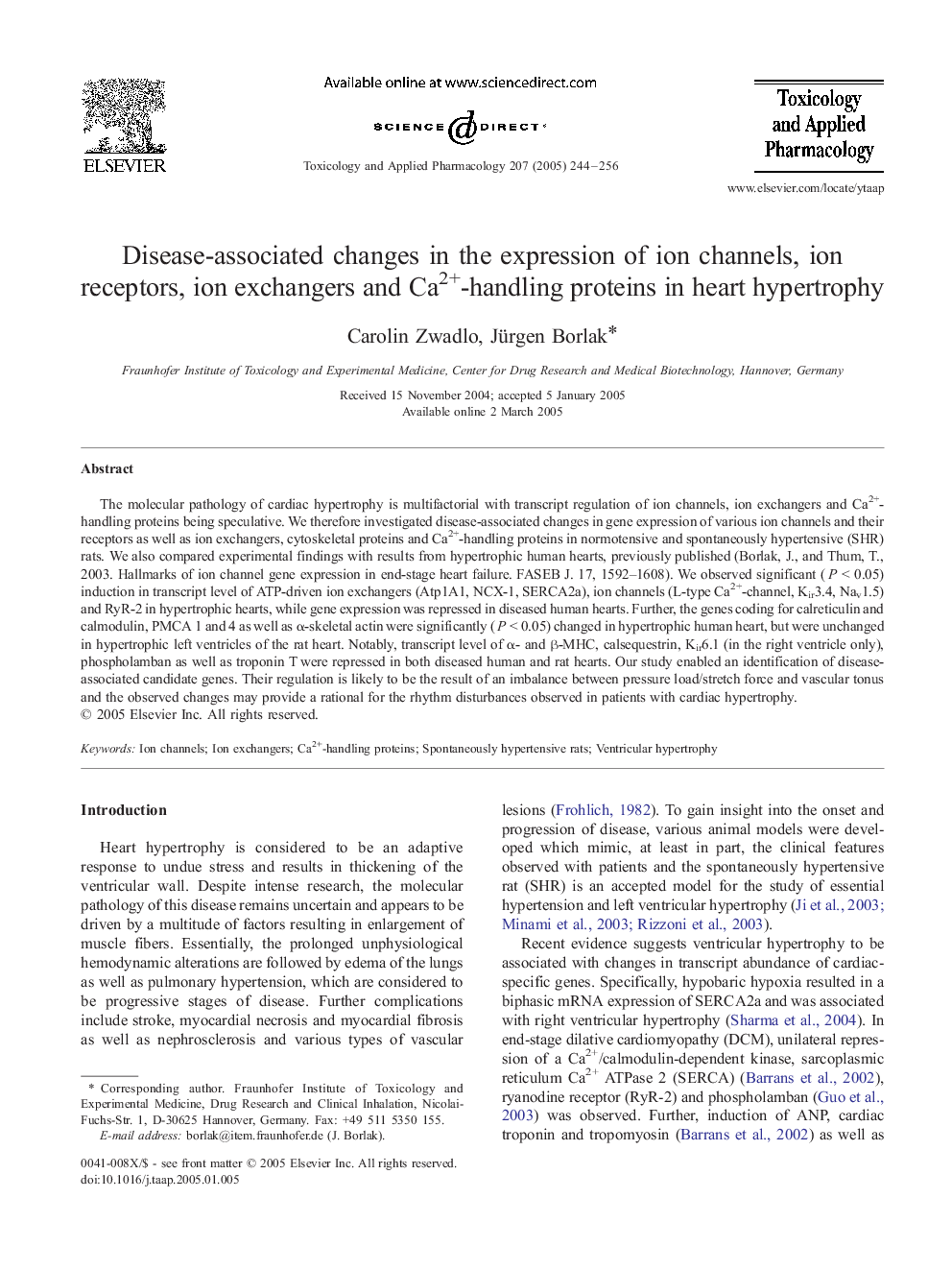| Article ID | Journal | Published Year | Pages | File Type |
|---|---|---|---|---|
| 9017993 | Toxicology and Applied Pharmacology | 2005 | 13 Pages |
Abstract
The molecular pathology of cardiac hypertrophy is multifactorial with transcript regulation of ion channels, ion exchangers and Ca2+-handling proteins being speculative. We therefore investigated disease-associated changes in gene expression of various ion channels and their receptors as well as ion exchangers, cytoskeletal proteins and Ca2+-handling proteins in normotensive and spontaneously hypertensive (SHR) rats. We also compared experimental findings with results from hypertrophic human hearts, previously published (Borlak, J., and Thum, T., 2003. Hallmarks of ion channel gene expression in end-stage heart failure. FASEB J. 17, 1592-1608). We observed significant (P < 0.05) induction in transcript level of ATP-driven ion exchangers (Atp1A1, NCX-1, SERCA2a), ion channels (L-type Ca2+-channel, Kir3.4, Nav1.5) and RyR-2 in hypertrophic hearts, while gene expression was repressed in diseased human hearts. Further, the genes coding for calreticulin and calmodulin, PMCA 1 and 4 as well as α-skeletal actin were significantly (P < 0.05) changed in hypertrophic human heart, but were unchanged in hypertrophic left ventricles of the rat heart. Notably, transcript level of α- and β-MHC, calsequestrin, Kir6.1 (in the right ventricle only), phospholamban as well as troponin T were repressed in both diseased human and rat hearts. Our study enabled an identification of disease-associated candidate genes. Their regulation is likely to be the result of an imbalance between pressure load/stretch force and vascular tonus and the observed changes may provide a rational for the rhythm disturbances observed in patients with cardiac hypertrophy.
Related Topics
Life Sciences
Environmental Science
Health, Toxicology and Mutagenesis
Authors
Carolin Zwadlo, Jürgen Borlak,
